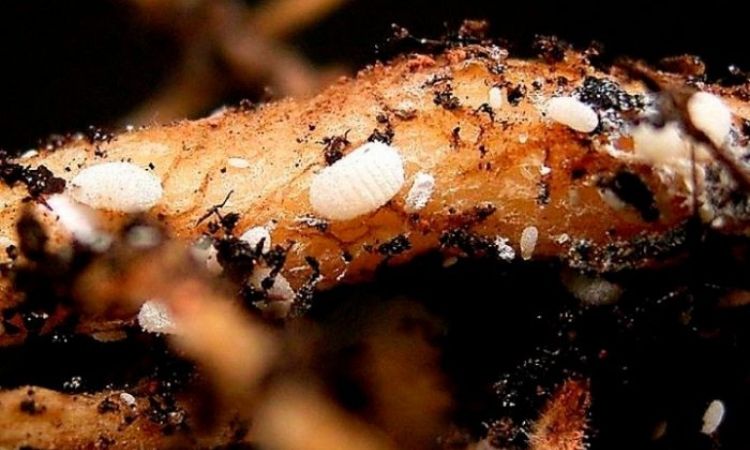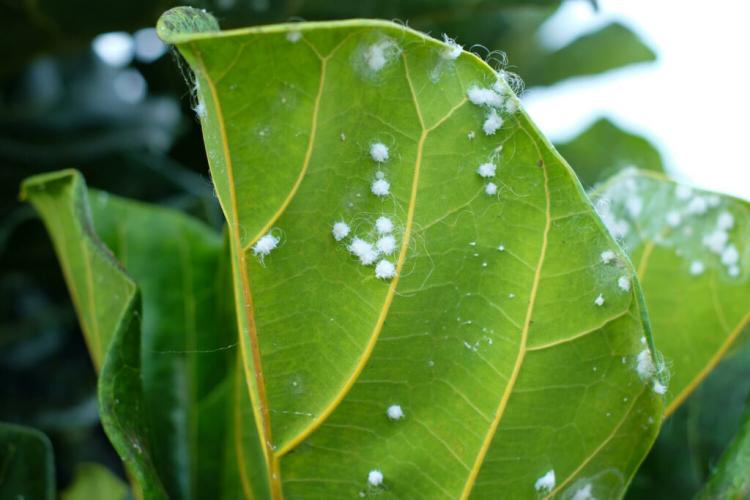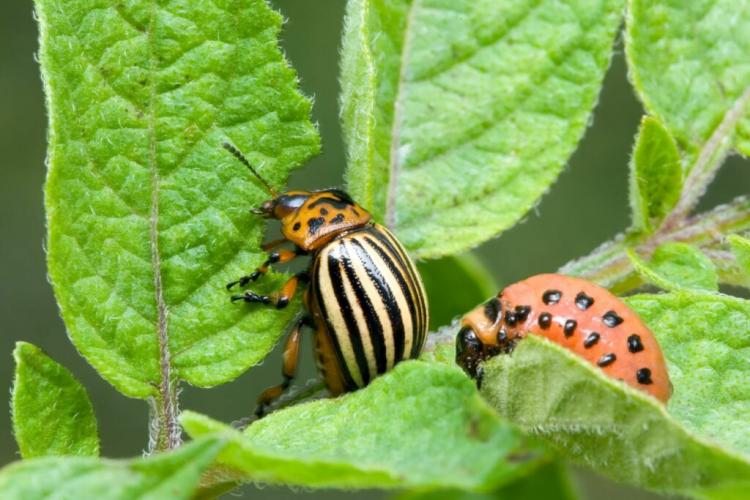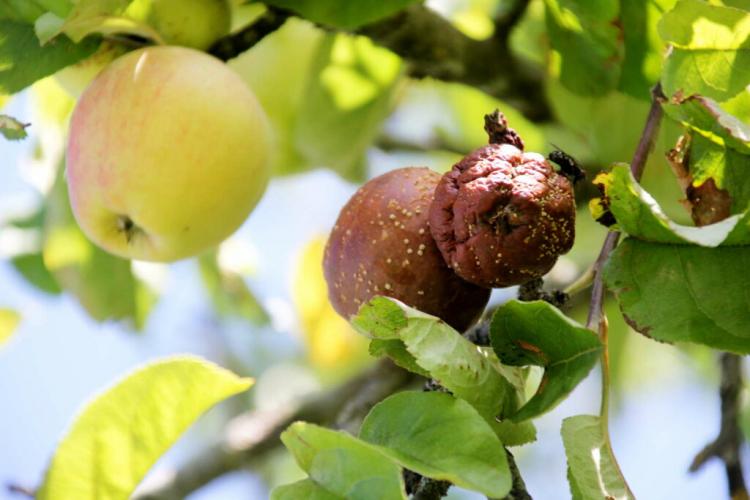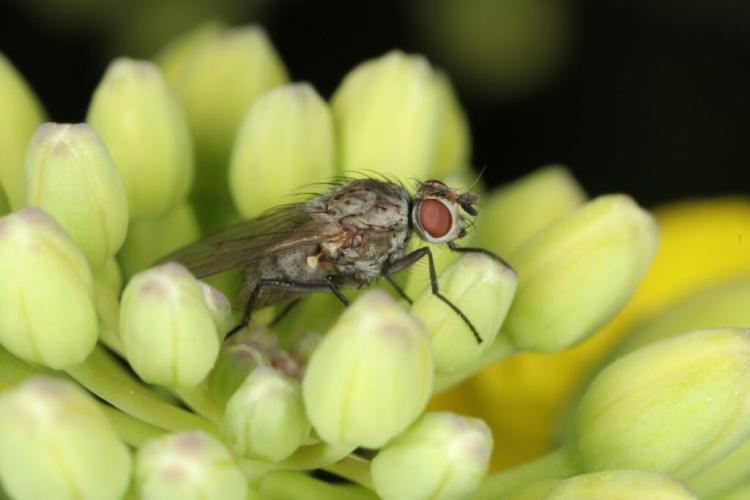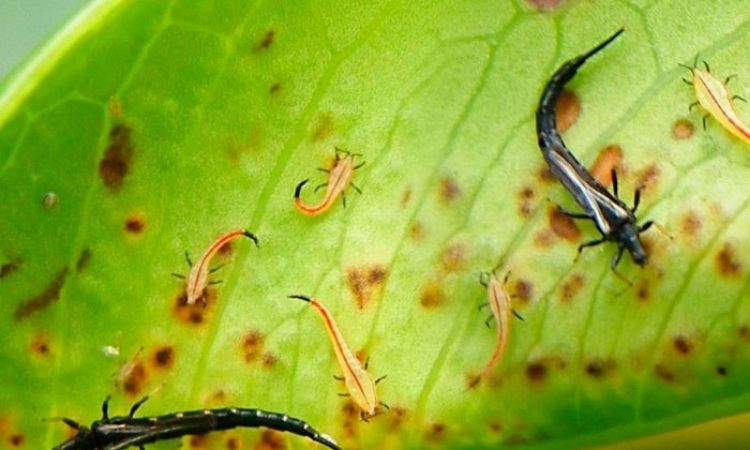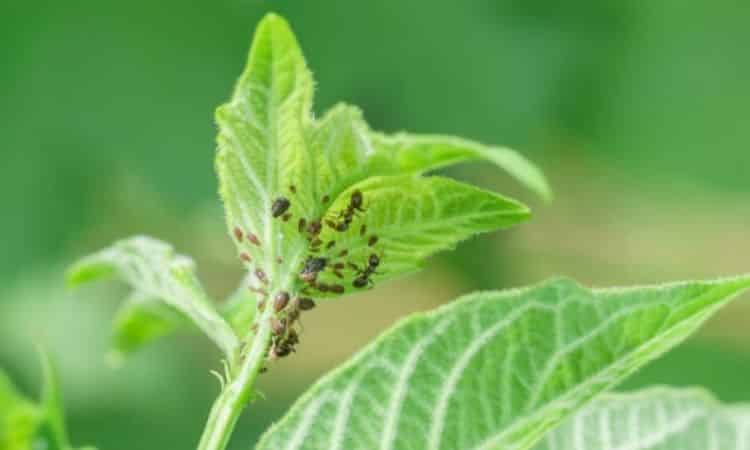How To Combat With Root Worm?
In recent years, scientists have found more than 100 species of rootworms. They belong to the genus Rhizoecus and the family Pseudococcidae. Root bugs are close relatives of mealybugs. However, a significant difference between them is their size: the length of an adult does not exceed 1.5-2.5 millimeters. Therefore, they cannot be seen with the naked eye.
Features Of The Rootworm
Table of Contents
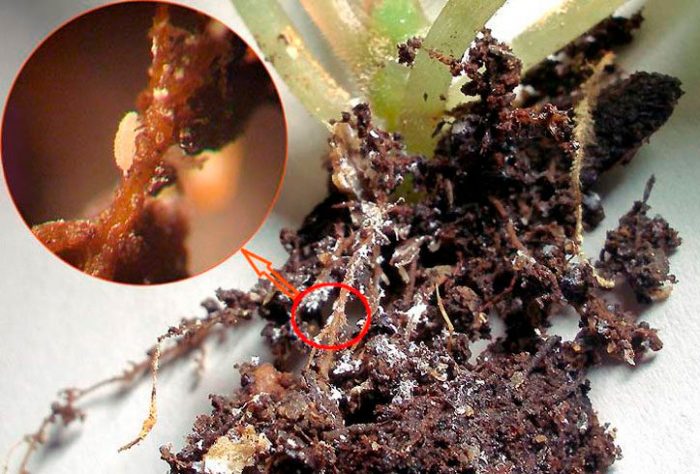
The homeland of the rootworm is America. Over time, he “moved” to Western Europe, and after a while, he was found in Eastern Europe. Saintpaulias, or violets, suffer most from such a pest. The blind and American worms are capable of killing both succulent plants and Saintpaulias in a short time. More than 30 species of such scale insects have been found in America. These pests pose a serious threat to many plants. The fact is that they are polyphages, which means that they can settle and feed on various plants.
Over the long period of their existence, rootworms have undergone significant evolutionary changes. Now they live exclusively underground, and as food, they use plant juices, which they extract from the roots. Such worms are especially dangerous because at the initial stages of infection it is impossible to understand that they are in the ground. And after the pest is found, the bushes will already be badly damaged. The fact is that it can only be detected during plant transplantation.
The larvae and females of such a pest are constantly in the soil, while they use the roots of a variety of plants as food. Very rarely, pests settle on the stem of a plant at a height of 0.1–0.5 cm from the soil surface. In this place, a bloom of whitish color is formed, which looks more like down. Such plaque is the secretion of the pest. The body of the female has a cylindrical shape of a yellowish-white color, its surface is covered with a layer of waxy coating. She leads a relatively sedentary lifestyle. To raise offspring, females create special chambers from their secretions, which outwardly look like fiber. They make cameras in the immediate vicinity of the roots, in voids, and also in a pot at the edge of the substrate. Outwardly, the masonry of the rootworm looks like a simple mold.
The male has an external resemblance to the whitefly, but he is much smaller than it. It also differs from the female in its fragility: the adult stops eating and dies after a short time. As a result, whole generations were observed throughout the year, in which there was not a single male.
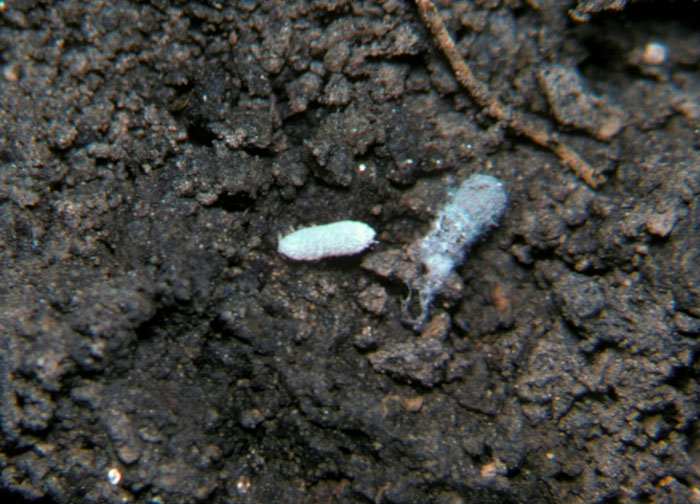
After the larva leaves the egg, it “takes care” of itself on its own. She looks for her own food while moving pretty quickly. Compared to the female, the larva has a much thicker layer of wax on the body. That is why, where the larva crawls, a trail of whitish waxy secretions remains.
If you find small damage on the root system of a flower that was left by rootworms, then when viewed under a microscope it will look more like a huge number of larvae swarming in the soil. Visually inspecting the plant affected by the rootworm, on the root collar you can see a whitish wax coating, which rises only a few millimeters above the substrate surface. On this basis, you can find out about the presence of a pest in the soil mixture without even removing the bush from the pot.
You can also detect the pest during the transplantation process. If you failed to find the worms at the initial stage of infection, then after a while the degradation of the affected plant will begin. At this time, the larvae of the worm are the most dangerous, because they can quickly and easily move into a nearby flower pot. Such pests multiply very quickly, so until you realize that one of your plants has withered due to worms, other indoor flowers will already be affected by them.
To this day, scientists do not stop researching rootworms. The fact is that they are capable of causing significant harm to valuable decorative and economic crops. On the territory of the former Soviet Union, such pests were initially found on the roots of cacti, and they were named: ordinary, aloe, and cactus. After some time, many new varieties appeared, while the list of those crops on which the bugs can settle has also significantly increased.
Plants on which the root bug can settle
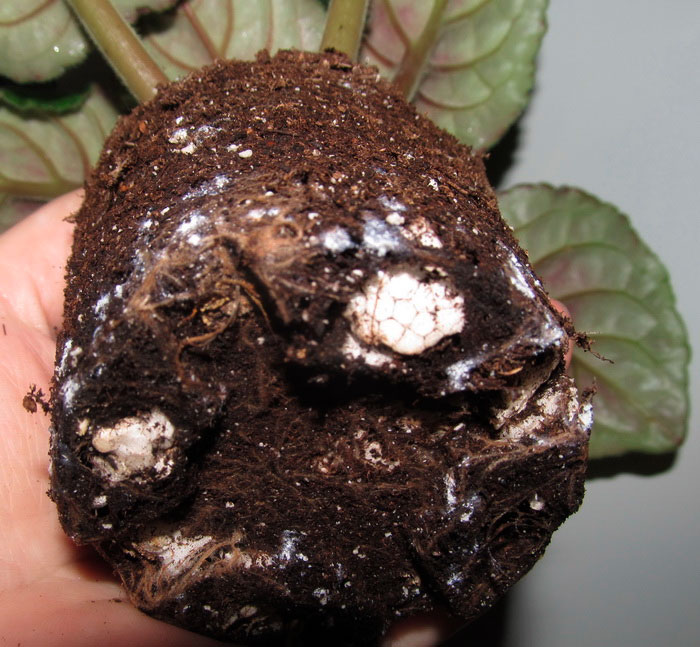
The root bug prefers to settle on those cultivated plants that are grown in a substrate that is well permeable to air and at the same time react negatively to abundant watering. For example, these are crops such as succulent plants and violets (Saintpaulias). And such a pest is capable of infecting:
- aroid cultures: dieffenbachia, anthurium, monstera, alocasia;
- ficus;
- asparagus;
- citrus;
- azalea;
- fat woman, aloe, adenium, cactus, spurge, sedum, rejuvenated, etc.;
- coffee;
- camellia;
- hibiscus;
- Saintpaulia, etc.
This is not a complete list. But this pest prefers to settle on these plants since when they are grown, the most favorable conditions for the worms are created. However, there are many varieties of those plants that are listed above, and among them, there are spectacular decorative flowering specimens. Most of them are incredibly similar to each other, and only specialists can distinguish them. However, all these plants have one thing in common – similar growing conditions and care. So, in the summer, the soil mixture in the pot is watered in such a way that it remains free-flowing, while in winter the crops do not need watering at all.
Signs of plant damage by rootworm
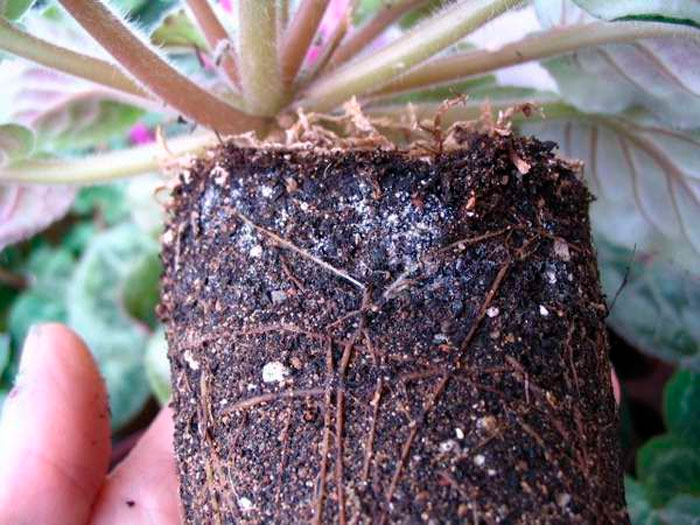
It is possible to understand that the plant is affected by the rootworm. The main thing is to know certain signs by which it is possible to calculate the presence of a pest in the soil. If you find a worm in a timely manner and start fighting with it, then the affected plant can be saved. In order for the plant to survive, it is recommended to transplant it as soon as possible, with a complete replacement of the substrate and pot.
You can understand that a pest has settled on the roots of a culture by the following signs:
- The bush, subject to proper care (appropriate temperature regime, watering, and soil mixture composition), completely stopped growing.
- The plant has become faded, the foliage has lost its luster and looks lifeless.
- Since the root system begins to actively die off due to pests, there is a massive yellowing of the foliage, while it loses its turgor.
- The plant affected by the worm weakens and begins to wither not only because the pest feeds on its juices, but also because it promotes the introduction of a special substance into the bush, which inhibits the culture.
- Damage to certain areas of the root system is observed, due to which the plant weakens and can be affected by pathogens of fungal and infectious diseases. As a result, the bush becomes lethargic and looks lifeless.
- At the very last stage of the worm lesion on the bush, you can see wrinkled and drying leaf plates.
If you examine a violet, which is affected by a worm, then on the surface of its root system you can find a bloom of gray color, which looks more like ash. And from the sides of the earthen coma, you can see a thick bloom of grayish-white color. If you look at Saintpaulia under a microscope, you can see that its root system is sprinkled with many larvae. At the same time, at the very edge of the earthen coma, you can see a huge number of egg-laying. And on the surface of the walls of the container in which there was a flower, you can see with the naked eye the wax secretions of rootworms, which outwardly are very similar to cotton wool. Such a bush is unlikely to be saved.
Prevention of plant damage
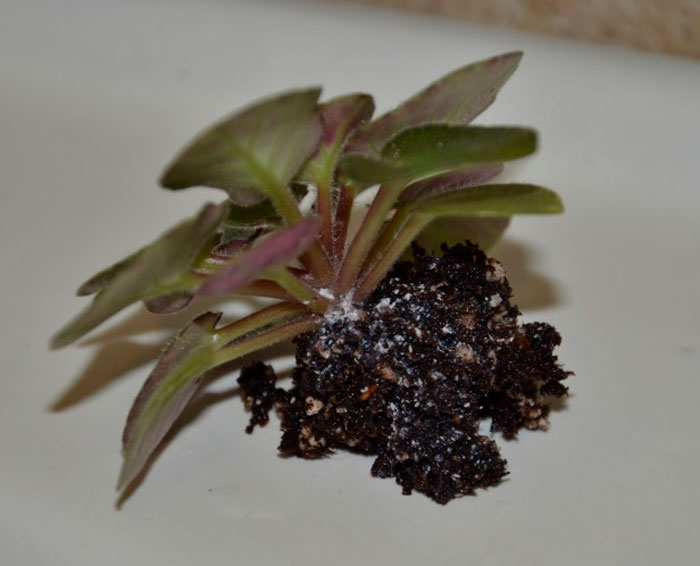
There are several preventive measures that will help avoid the appearance of root bugs in the ground of indoor plants:
- Both prepared with your own hands and purchased soil mixture must be thoroughly steamed.
- Inspect all plants regularly and monitor their development.
- Water your home culture in time. Experts advise not to overdry the earthen lump, since in this case favorable conditions are created for the life and development of the pest. However, not all indoor crops are suitable for this watering regime.
- Keep a close eye on the state of the potting soil. If signs of the appearance of a worm were noticed, then you need to start dealing with it as soon as possible.
- Systematically inspect the entire bush, paying attention to its condition, color, and turgor of the foliage, and do not forget to check the root collar.
- In autumn and spring, it is recommended to carry out 3 or 4 abundant watering with the full soaking of the earthen coma. To do this, use a solution of an insecticidal drug, for example, Alloundy or Aktara. Pour the solution until it pours out of the drainage holes.
- During transplantation, be sure to inspect both the bush itself and its earthy clod and roots.
Control measures
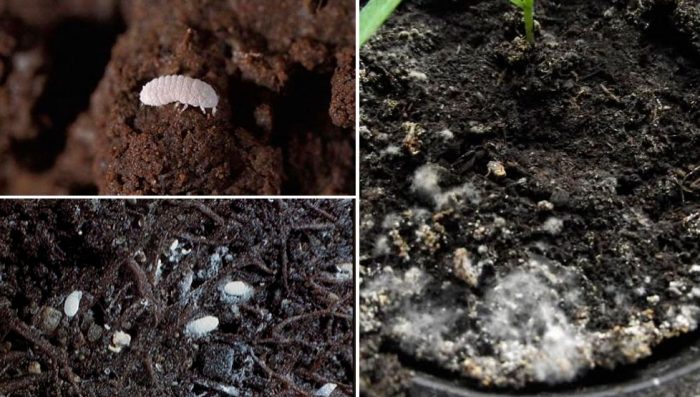
If a mealybug settles on a domestic plant, then it can be noticed with the naked eye and timely start to fight it, since it lives and feeds on the surface of the substrate and plant. The rootworm lives on the roots and in the soil mixture, so it is not easy to detect it. As a rule, it is possible to understand that a pest has settled on a bush only during transplantation. Most often, the plant is already badly damaged, and it is extremely difficult to fight the pest. However, you can still save the bush.
Folk remedies
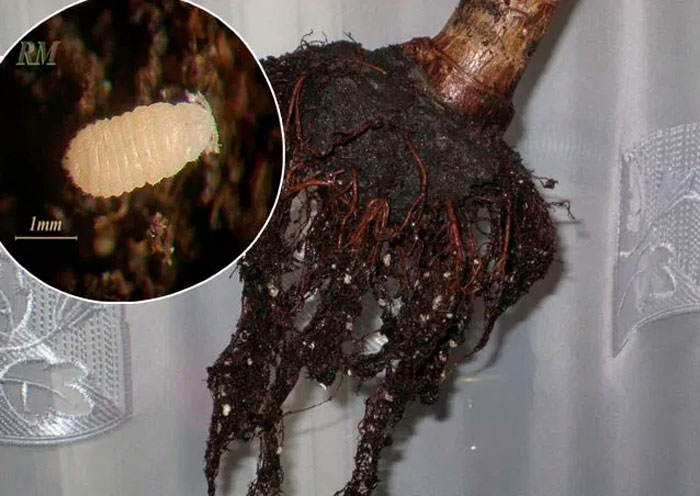
Since rootworms are extremely dangerous for many crops, it is recommended to immediately use chemicals to combat them, because folk remedies do not give one hundred percent results. However, experts still recommend resorting to a hot root bath, the technology for its implementation is quite simple:
- Immerse the root system of the plant in a container of hot water (no higher than 55 degrees) and wait 15 to 20 minutes. Then take out the bush and wait until it dries well, it usually takes 15 to 20 hours. After the root bath, it is recommended to plant the plant in a new pot and fresh soil mixture.
- Gently remove the plant from the container along with the earthy clod.
- Rinse the root system thoroughly so that the substrate is completely removed from it.
- Wash the container well with a solution of detergent and pour boiling water over it. If you want, you can just throw it away and buy a new pot.
- Using a sharp tool, cut out any injured areas on the roots.
- Rinse the root system thoroughly with an Acaricide solution.
- For planting, use a fresh, disinfected soil mixture.
- Plant the bush in a new container and substrate.
- Move the transplanted plant away from other flowers. The fact is that the larvae move extremely quickly and can easily climb into a flower pot located nearby.
Pesticide
With the help of folk remedies, it will not be possible to get rid of such a dangerous pest as the rootworm. Chemicals are much more effective, only with the help of them, it is possible to completely destroy such a sucking pest.
For flower growers and gardeners far from science, it is quite difficult to distinguish between the types of rootworm and even more so to remember the periods of their development. In this regard, it is recommended to process the affected plant in 3 stages:
- the first processing is carried out;
- on the fourteenth day, the bush is treated a second time;
- the last treatment is carried out on the twenty-first day.
The fact is that the eggs of the pest are located in linen chambers, which are covered with a layer of wax on top. In this regard, chemical agents are not able to destroy them. Therefore, during the first treatment, adults are destroyed, and the second and third are needed in order to exterminate their offspring.
However, scientists have found that the chambers where the larvae develop are not destroyed for a long time (several months or years). In these chambers, larvae may well hide during the treatment of the plant with chemicals. That is why it is extremely rare to completely destroy all pests. For each of the three treatments, agents that belong to neonicotinoids are suitable, for example, Apache, Dantop, Aktara, Konfidor-Maxi, and Mospilan. If these drugs were not effective enough, then you can treat the bush with a new systemic insecticidal agent – Spirotetramat. It is recommended to spill the substrate in a pot with a solution of these drugs for three months at a frequency of 1 time in a week and a half. To prepare a solution in 1 liter of water, dissolve 1 g of Regent, Mospilant, Confidor-Maxi, Dantop.
These chemicals can kill all types of worms. The fact is that for some species, exposure to the chemical for 1-2 days will be enough, while others will need from 5 to 7 days to achieve maximum results. Also, the end result depends on the degree of infestation of the bush. If the pests have occupied the entire root system, then at least 2 treatments will be needed.
The more powerful the pesticide, the stricter safety measures must be observed. However, a stronger remedy can deal with worms in one go, when a weak drug will have to treat the bush several times. For example, Fitoverm (third hazard class) will need to treat the plant twice, when Aktelik (second hazard class) is able to cope with the pest the first time.
Contact insecticidal preparations, in contrast to systemic ones, are used in the fight against mealybugs on foliage. These chemicals kill the pest only when they get inside with food. Systemic insecticides are able to control rootworms as their surface is protected by a water-impermeable wax layer. Such an insecticide appears in the body of the worm along with the plant sap. As a result, the agent, once inside the pest’s body, destroys it. A systemic insecticidal preparation in liquid form is used to spray and water the affected bush.
